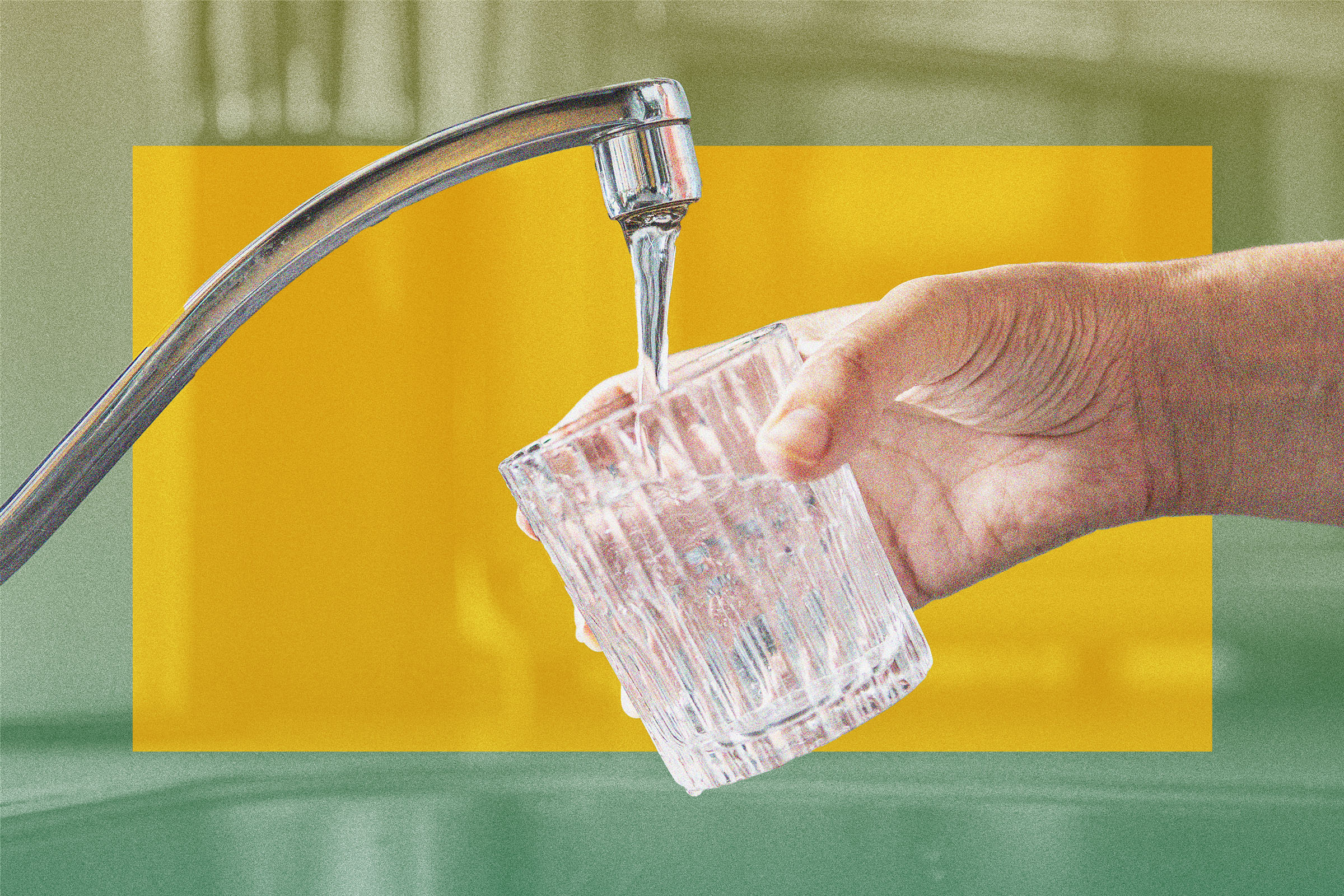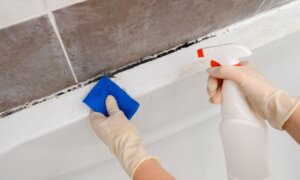When Grand Rapids, Michigan, became the first city to add fluoride to its water supply in 1945, the decision was hailed as a major public health innovation aimed at preventing cavities. Many other cities quickly followed suit, and water fluoridation became a widespread practice nationwide.
Today, with fluoride easily accessible in toothpaste and mouthwash, its added value in drinking water has been called into question. A review from the Cochrane Database of Systematic Reviews found that fluoridated water reduces tooth decay by only a tiny amount—about a quarter of a tooth surface—raising doubts about its effectiveness.
For decades, fluoride has quietly flowed through our taps, touted as a safeguard for dental health. But what if this commonly accepted chemical—long promoted for its benefits to teeth—is something you’d prefer to avoid?
Growing evidence suggests fluoride may pose risks beyond our teeth, affecting thyroid health, cognitive development, and more. This concern has led many to seek ways to eliminate fluoride from their lives. Whether you’re wary of long-term exposure or simply want cleaner water for your family, there are solutions. From advanced filtration systems to simple DIY methods, here’s how to remove fluoride from your water—and your life.
Push to End Fluoridation
A February systematic review and dose-response meta-analysis published in Environmental Research linked excessive fluoride exposure to
thyroid issues, and a 2016 National Toxicology Report noted an association between fluoride and
lowered IQ in children.
In September, a federal judge ordered the Environmental Protection Agency (EPA) to take regulatory action on fluoride, citing evidence that community water fluoridation at 0.7 milligrams per liter may pose an unreasonable risk to children’s health under the Toxic Substances Control Act. The court did not mandate specific steps, leaving the EPA “obliged to take regulatory action in response.”
Pharmacist and thyroid specialist Izabella Wentz echoed these concerns. She told The Epoch Times, “Reducing fluoride exposure is crucial for supporting overall health and well-being.”
Wentz said that while most Western European nations have ceased fluoridating their water, the United States, Canada, and parts of the UK continue the practice.
How to Remove Fluoride From Your Water at Home
As the debate over fluoridation in public water systems continues, many households are opting to address the issue themselves. Below are some of the most popular methods for reducing fluoride exposure at home.
Reverse Osmosis Systems
Reverse osmosis (RO) systems are highly effective at removing fluoride and other contaminants from drinking water, filtering out up to 84 percent through a semipermeable membrane. This purification process forces water through the membrane, leaving impurities behind. Fluoride expert Richard Sauerheber told The Epoch Times that modern RO systems can operate for years with minimal maintenance while effectively reducing fluoride levels.
However, RO systems have certain drawbacks. According to Tom Volinchak, author of “Open Tap: Drink Poison,” they can produce up to 17 gallons of wastewater for every gallon of filtered water and remove beneficial minerals, which may need to be reintroduced for taste and health benefits.
Despite these challenges, point-of-use RO systems remain an affordable and attractive option, typically costing under $1,000. They are especially beneficial in areas with higher fluoride contamination. For those seeking more comprehensive filtration, whole-house RO systems can cost upward of $15,000.
Activated Alumina Filters
Activated alumina filters, such as Berkey’s PF-2, can remove up to 97 percent of fluoride and provide a convenient countertop solution that requires no plumbing or electricity. These filters use aluminum oxide to capture fluoride molecules on their porous surface.
However, there are concerns that small amounts of aluminum may be released into the water, and in alkaline conditions, these filters may leach harmful aluminum-fluoride complexes. Filters must be replaced regularly, typically after 1,000 gallons, and some users report a decline in water quality over time.
It should be noted that aluminum exposure might be of concern for those using activated alumina filters.
Bone Char Filters
Bone char is another option for filtering fluoride from drinking water. Made from crushed animal bones heated in a kiln under low-oxygen conditions, bone char naturally absorbs fluoride and other contaminants, such as heavy metals, making it an effective filtration tool. Bone char’s ability to trap fluoride raises an important question: If animal bones can absorb fluoride so effectively, what impact might fluoride have on the bones in our own bodies?
Research shows that 99 percent of fluoride lives in bones. A 2023 study in JAAOS Global Research & Reviews found that children living in areas with higher fluoride levels in drinking water experienced more bone fractures, especially in the arm and elbow.
Bone char filters work through adsorption, in which fluoride molecules adhere to the surface of the char as water passes through. However, its filtration lifespan can be unpredictable, varying with fluoride levels, and requires regular monitoring and replacement.
Sauerheber said that the quality of bone char varies by source—char from Scotland is known to be highly effective but harder to find, while Brazilian char may be less reliable. This variability makes reverse osmosis a more consistent option for most households.
Ion Exchange Systems
Ion exchange systems use resin beads to replace fluoride ions with less harmful ions, such as chloride, effectively lowering fluoride levels. However, these systems come with environmental concerns—plastic resin beads contribute to plastic waste, and aging filters may release microplastics or concentrated fluoride.
Frequent filter replacements make ion exchange systems expensive, particularly in regions with high fluoride levels. Additionally, the environmental impact raises sustainability concerns for many households, Volinchak said.
Limitations of Certified Filtration Products
Volinchak pointed out that not all filtration systems perform as effectively as their certifications suggest. Organizations like the Water Quality Association and the National Sanitation Foundation certify filters based on their ability to remove a specific percentage of contaminants. However, these certifications do not guarantee that the filtered water is entirely safe to drink.
Volinchak warned that even filters claiming to remove 98 percent of a contaminant may be insufficient if the contaminant levels in the source water are particularly high. In such cases, harmful amounts of fluoride can remain after filtration. This highlights the importance of regularly testing your water’s contamination levels to ensure your filtration method is effective.
Distillation: A DIY Approach
For those seeking a more hands-on method to remove fluoride, distillation provides a reliable, though labor-intensive, solution. This process involves boiling water and collecting the steam, which is then condensed back into liquid, leaving fluoride and other contaminants behind. However, distilled water lacks minerals, which many people find results in a flat or bland taste.
“Distillation works well but requires labor on the part of the consumer,” Sauerheber said. According to him, it is essential to remineralize the water to avoid drinking overly purified, mineral-deficient water.
While distillation is highly effective at removing fluoride, it requires time, equipment, and the additional step of reintroducing essential minerals.
For those looking for a more convenient solution, water distillation machines offer an automated approach to fluoride removal. Distillation units are available in various sizes, from compact countertop models to larger units suited for higher volume needs.
Although they eliminate the manual labor of traditional distillation, these machines produce mineral-free water, requiring remineralization for optimal taste and health. Additionally, they can be energy-intensive, which may increase utility costs over time.
5 Ways to Reduce Your Fluoride Burden
Reducing fluoride exposure is important for maintaining health. If you have already been exposed or live in an area with high fluoride levels, there are steps you can take to mitigate its effects. While no supplements can directly neutralize fluoride, certain nutrients and lifestyle changes may support the body’s natural detoxification processes.
1. Be Mindful of Fluoride in Foods and Products
Beyond water, fluoride can sneak into your daily routine through common foods, beverages, and products. Wentz said that black and red teas and certain medications are hidden sources of fluoride because tea plants absorb fluoride from the soil. Additionally, foods processed with fluoridated water and certain pesticides can introduce fluoride into your diet, further contributing to overall exposure.
Wentz said that swapping out conventional dental hygiene products for ones made without fluoride is another simple way to lower your fluoride intake. Reading labels and choosing fluoride-free options wherever possible can make a big difference.
While the American Dental Association advises most people—children, adolescents, and adults—to brush twice a day with fluoride toothpaste for optimal dental health, many holistic dentists remain skeptical. They argue that there is not enough long-term evidence to fully support the safety of fluoride use in dental care.
2. Boost Your Nutrient Intake
Boosting nutrient intake can help counter fluoride’s effects on the body, particularly by supporting thyroid function. Fluoride competes with iodine, which is essential for hormone production. Ensuring adequate iodine intake from sources like seaweed, fish, dairy, or iodized salt helps protect the thyroid. However, Wentz cautioned against high-dose iodine supplements, especially for those with thyroid disorders like Hashimoto’s, as it may worsen the condition.
Calcium is another crucial nutrient, as it can bind with fluoride and reduce bone absorption. Magnesium helps balance fluoride and calcium, while antioxidants like vitamin C and selenium protect against the oxidative stress caused by fluoride exposure.
Wentz said she recommends getting these essential nutrients primarily through a whole-food diet. However, supplements can provide an effective alternative for those with deficiencies
3. Support Your Liver
The liver plays a crucial role in detoxification, and keeping it healthy can help your body flush out harmful toxins, including fluoride.
“Taking liver-supportive supplements is a safe way to support your body’s detoxification from fluoride,” Wentz said.
A 2022 study found that adolescents exposed to high fluoride levels in drinking water experienced a significant increase in fluoride excretion after supplementation with wild plants like purslane and quelite cenizo. This suggests that these nutrient-rich plants may help the body detox from fluoride exposure, showing potential as a natural remedy for those affected by contaminated water.
Incorporating liver-friendly foods into your diet—such as lemons, beets, cruciferous vegetables, cilantro, and turmeric—can boost your liver’s ability to process and remove toxins as well, Wentz said.
4. Use Specific Supplements
For those concerned about past fluoride exposure, certain supplements may help mitigate its effects. According to Wentz, taurine, an amino acid, has been shown to reverse kidney and thyroid damage in animals exposed to fluoride.
GABA (gamma-aminobutyric acid) may also assist by improving thyroid hormone levels. And studies have shown that resveratrol, a potent antioxidant, has demonstrated protective effects, such as preventing fluoride toxicity and restoring thyroid function in animals.
5. Adopt Detox-Friendly Habits
Simple lifestyle changes can help your body’s natural detox pathways function more efficiently. Wentz said that sweating, especially in an infrared sauna, is one of her favorite ways to support detoxification.
Regular exercise, dry skin brushing, and lymphatic massage are also excellent ways to boost circulation and help the body eliminate toxins through the skin and lymphatic system, Wentz said.
By incorporating these steps—from avoiding hidden sources of fluoride to boosting detoxification with targeted nutrients and healthy habits—you can take control of your fluoride exposure and support your overall well-being.














